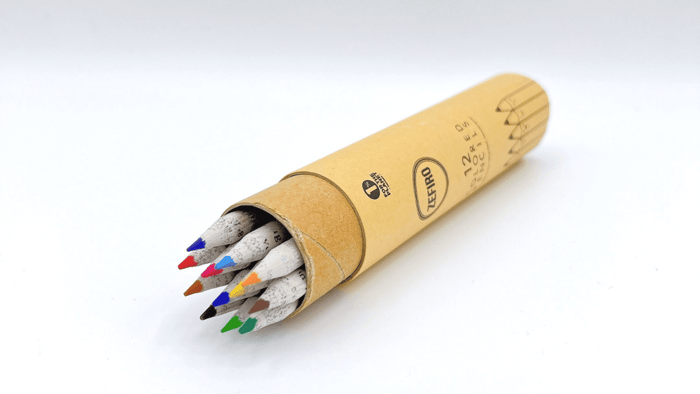Teaching kids about zero waste living can be an incredibly empowering and rewarding journey—but it’s not always a simple one, especially when multiple households with different values are involved. Whether you're co-parenting, sharing custody, or simply trying to raise a sustainably minded child in a world of convenience and consumerism, it’s possible to instill lifelong habits that spark curiosity, creativity, and compassion—without lecturing, shaming, or forcing the issue.
Let’s talk about how to teach kids the importance of reducing waste—even when not everyone around them is on the same page.
Start with Why (But Make It Kid-Friendly)
Kids are naturally curious. Instead of framing sustainability as a list of “shoulds,” show them why reducing waste matters in a way that feels relevant. Forget the doom-and-gloom climate statistics—instead, talk about how animals get sick when they eat plastic, or how a local river was cleaned up because people cared.
Children love stories. Books and documentaries that highlight real kids making real environmental change can be both inspiring and empowering. Look for reads like One Plastic Bag or We Are Water Protectors—titles that center youth voices in environmental action.
Bonus Tip: Create your own “why” story together. Maybe your family’s mission is to help the turtles, or to protect your favorite park or beach. That shared purpose helps give everyday actions meaning—and makes it easier to explain your choices, especially when they look different from someone else’s.
Make Reducing Waste a Game
Let’s be real—no one likes being lectured. And for kids, learning sticks when it’s interactive, hands-on, and fun. Turning zero waste practices into games, challenges, or experiments makes them more likely to stick long term.
Try this: Weigh your household trash at the end of the day for a week. See how much waste you generate—then challenge each other to reduce it the next week. Can your child go a full day without producing trash? Offer a fun reward if they beat their own record.
Even better? Give your child the “power” to be the zero waste detective at home. Let them investigate sneaky sources of waste and brainstorm swaps. You might be surprised how creative kids can get when they feel like their ideas matter.
Sometimes they might spot something during errands or in your kitchen drawer—a reusable sponge or a beeswax wrap—and say, “Hey, we use this instead of the plastic kind, right?” That sense of pride sticks with them, especially when they're part of the process.
Lean Into the Fun Side of Sustainability
Sustainability doesn’t have to be a chore—it can be a treasure hunt, a science experiment, or a crafting adventure. Kids are more likely to engage in eco-friendly habits when they associate them with joy and discovery.
A few ideas to try:
Upcycling Craft Nights: Turn old t-shirts into tote bags or cut-up cereal boxes into bookmarks and gift tags.
Secondhand Fashion Shows: Let them pick fun outfits at the thrift store and model them runway-style at home.
DIY Cleaners & Soaps: Mix up your own cleaner or try out foaming hand soap tablets. There’s something deeply satisfying about shaking a bottle and watching it foam to life.
Gardening Together: Even a small pot of herbs on the windowsill gives kids a direct connection to their food—and it’s a great way to reuse old jars or yogurt cups, too.
You don’t need Pinterest-perfect results to make these moments meaningful. What matters is letting kids see that low-waste living can be colorful, creative, and fun.
Go on an Environmental Adventure
If your child thrives with hands-on learning, take your sustainability lessons beyond the four walls of your home. Experiencing the real-world impact of waste—and how we can help—can be a game changer.
Here are a few ideas:
Tour your local recycling plant or landfill. Seeing where waste actually goes often leaves a bigger impression than any infographic.
Join a river or park clean-up. Bring gloves, make it a scavenger hunt, and tally up your finds.
Visit a zero waste or refill store. Exploring a space filled with plastic-free alternatives can feel like a field trip—kids often love the aesthetics, the textures, and the novelty of things like soap bars and wooden toothbrushes. You can also let your kids help with picking out sustainable products when you are zero waste online shopping.
Volunteer together at a community event that focuses on sustainability, like composting at a school garden or helping with sorting at a local farmer’s market.
Even small outings like these can anchor values in lived experience—and show kids they’re part of something bigger.
Model the Lifestyle—Without the Guilt Trip
One of the hardest things in co-parenting or shared households is managing different values. Maybe your house uses cloth napkins and a compost bin, while another relies more on takeout and convenience items. It’s natural to feel frustrated—but shaming or comparing won’t help.
What will help? Modeling your values with calm confidence.
Explain your choices in simple, positive language:
“In our home, we use cloth towels because we like making less trash.”
“We try to choose things that can be used again and again.”
Kids are perceptive. They’ll pick up on your tone. If it’s joyful and empowering, they’re more likely to stay curious instead of defensive.
And here’s the truth: even if they’re not 100% waste-free in every setting, the lessons you teach them stick. That cloth napkin might pop into their mind when they’re older and setting up their own apartment. Your consistent example gives them a strong foundation—even if other households look different.
Empower, Don’t Scare
We all want our kids to understand the seriousness of environmental issues. But overwhelming them with fear-based messaging can backfire. Instead of telling them the planet is in crisis, help them see how they can be part of the solution.
Celebrate the little wins:
“Hey, you remembered your reusable snack bag at school—nice work!”
“You helped us save two plastic containers today!”
Look for signs of progress in your community, too. Compost bins at school? Thrifted costumes for Halloween? New bike lanes in town? These stories of progress keep kids optimistic—and make them more likely to stay engaged.
If your child is especially creative or problem-solving minded, invite them to brainstorm ideas:
Could they invent a way to carry snacks without zip-top bags?
Design their own “waste-free lunch kit”?
Lead a mini workshop or show-and-tell at school?
Framing them as part of the solution builds confidence—and keeps sustainability tied to pride and purpose.
Make It a Family Thing
Kids absorb their values from the people around them, so involve them in your daily rituals and choices. Let them help meal plan (food waste prevention!), choose which veggies to regrow, or organize the reusable items drawer.
A special ritual some families love is letting kids pick out their own zero waste products—maybe a bamboo toothbrush, a compostable dish sponge in a fun shape, or a wooden comb that’s just theirs. The novelty helps create ownership, and little touches like that can go a long way.
If you have a favorite local shop (or a zero waste online store that shares your values), let kids browse with you—not just for what you need, but to explore what sustainable living can look like. Familiarity breeds confidence. And over time, they start to see these things as normal, not “alternative.”
Every Lesson Counts
When it comes to raising mindful, eco-conscious kids, no effort is wasted. Even if their journey isn’t perfectly zero waste—even if one parent does things differently—they’re still learning, noticing, and growing.
Remember, the goal isn’t perfection. It’s presence. It’s kindness, creativity, and curiosity. It’s showing them that taking care of the planet isn’t about judgment or sacrifice—it’s about connection and joy.
We can’t change the whole world overnight, but we can nurture one little world at a time—starting with the one inside our home.
Let’s Make Zero Waste Fun—Together
At Mudd House Mercantile, we offer simple, zero waste products to help you and your child enjoy the journey toward low-waste living. From playful swaps like newspaper colored pencils and hand puppets to practical items like compostable brushes and reusable cloths, everything we carry is made to inspire curiosity and joy.
Small steps can make a big impact—and we’re here to help you every step of the way.

